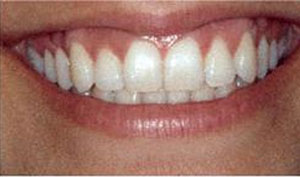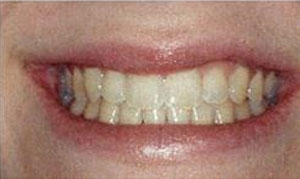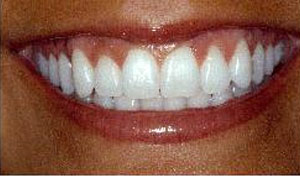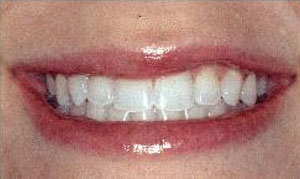Tooth Whitening
How Does it work?
There are lots of different ways of bleaching teeth.
Home bleaching is the easiest and cheapest way of bleaching your teeth. Your dentist will make rubber mouthguards so that they fit your teeth precisely and then provides you with bleaching gel to place in them. Your dentist will give you instructions on how to put the gel in the mouthguards. You will need to wear the mouthguards for a few hours each day.
Surgery bleaching is much more expensive and more intensive treatment. .This is also known as "laser" or "power" bleaching. Your dentist will put a rubber seal around your teeth to protect your gums. Then, the bleaching gel is painted onto your teeth and a special bright light is pointed at them. This light speeds up the whitening process. The procedure takes about one hour. Whitening toothpastes?There are several whitening toothpastes on the market. Although they do not affect the natural colour of your teeth, they may be effective at removing staining and therefore may improve the overall appearance of your teeth. Whitening toothpaste may also help the effect last, once your teeth have been professionally whitened.
Over the counter kits?These kits are sold in most major chemists throughout the UK. In general, they contain rubber mouthguards (moulds that are approximately the same shape as your teeth) and tubes of bleaching gel. These kits only contain weak hydrogen peroxide, and tend not to be as effective as stronger products that may be used by your dentist.
How long will the results last?
The whitening effects of different bleaching methods can last for a few years, but this varies from person to person. Your eating, drinking, smoking and toothbrushing habits may have an effect on how long the treatment lasts. It is important to bear in mind that bleaching doesn't always result in the whiteness that you expected. The results vary from person to person and depend on the shade of your teeth before bleaching. For this reason, it is important to discuss all the possible options for improving the appearance of your teeth with your dentist before you make a decision.
Side effects?
Some people may find that their teeth become sensitive to cold during or after the treatment. Others report discomfort in the gums, a sore throat or white patches on the gum line. These symptoms are usually temporary and should disappear within a few days of the treatment finishing. If any of these side effects persist you should consult your dentist.
Who should not have tooth whitening?
If you have decay, this should be treated before starting any whitening treatments. Similarly, your gums should be healthy, so if you have any gum disease this should be treated first. If your teeth are extremely sensitive to hot and cold food or drinks, or if there are lots of fracture lines on your teeth, bleaching may not be recommended. Some types of staining do not respond to bleaching as well as others. Bleaching won't work on false teeth, crowns, veneers or fillings (including tooth-coloured fillings). Instead, your dentist may be able to replace these with lighter ones. Bleaching is not recommended for children with developing teeth or for pregnant or breastfeeding women.
Before


After


